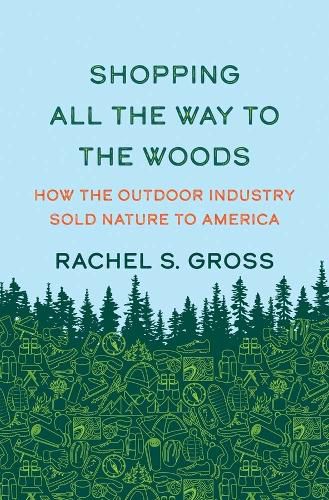Readings Newsletter
Become a Readings Member to make your shopping experience even easier.
Sign in or sign up for free!
You’re not far away from qualifying for FREE standard shipping within Australia
You’ve qualified for FREE standard shipping within Australia
The cart is loading…






A fascinating history of the profitable paradox of the American outdoor experience: visiting nature first requires shopping
No escape to nature is complete without a trip to an outdoor recreational store or a browse through online offerings. This is the irony of the American outdoor experience: visiting wild spaces supposedly untouched by capitalism first requires shopping. With consumers spending billions of dollars on clothing and equipment each year as they seek out nature, the American outdoor sector grew over the past 150 years from a small collection of outfitters to an industry contributing more than 2 percent of the nation's economic output.
Rachel S. Gross argues that this success was predicated not just on creating functional equipment but also on selling an authentic, anticommercial outdoor identity. In other words, shopping for the woods was also about being-or becoming-the right kind of person. Demonstrating that outdoor culture is commercial culture, Gross examines Americans' journey toward outdoor expertise by tracing the development of the nascent outdoor goods industry, the influence of World War II on its growth, and the boom years of outdoor businesses.
$9.00 standard shipping within Australia
FREE standard shipping within Australia for orders over $100.00
Express & International shipping calculated at checkout
A fascinating history of the profitable paradox of the American outdoor experience: visiting nature first requires shopping
No escape to nature is complete without a trip to an outdoor recreational store or a browse through online offerings. This is the irony of the American outdoor experience: visiting wild spaces supposedly untouched by capitalism first requires shopping. With consumers spending billions of dollars on clothing and equipment each year as they seek out nature, the American outdoor sector grew over the past 150 years from a small collection of outfitters to an industry contributing more than 2 percent of the nation's economic output.
Rachel S. Gross argues that this success was predicated not just on creating functional equipment but also on selling an authentic, anticommercial outdoor identity. In other words, shopping for the woods was also about being-or becoming-the right kind of person. Demonstrating that outdoor culture is commercial culture, Gross examines Americans' journey toward outdoor expertise by tracing the development of the nascent outdoor goods industry, the influence of World War II on its growth, and the boom years of outdoor businesses.